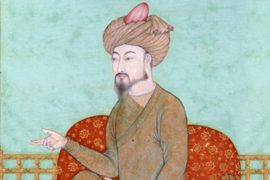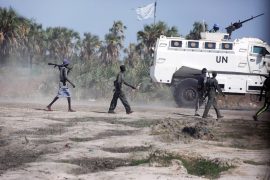The Middle East has been a flashpoint in global affairs for over a century. Sustained geopolitical tensions have evaded peaceful co-existence between communities that inhabit this ever-volatile region of West Asia.
The signing of the Balfour Declaration in 1917 culminated in the Nakba of 1948, where Israeli militias and the Israeli army forcefully evicted more than 750,000 Palestinians from their homes, villages and towns. This dispossession and displacement form the bedrock of the ongoing Israeli-Palestinian conflict.
A peaceful resolution of the conflict—depicted by Palestinian poet Mahmoud Darwish—has been reduced to a pipe dream with the October 7, 2023, terrorist attacks by Hamas in which 1200 Israelis were murdered and over 250 women and children were taken hostage.
Israel’s retaliatory offensive on Gaza, sanctioned by Prime Minister Benjamin Netanyahu, who declared a protracted war on decimating Hamas, has had a devastating impact on Palestinian civilians in Gaza. The death toll is over 42,000, of which more than 16,000 are children. Gaza—touted as the ‘world’s largest open-air prison’—has been reduced to rubble. Yet, the world is still deliberating whether this disproportionate warfare—conducted with impunity by Israel in full view of global mainstream and social media—qualifies for genocide.
The carnage is unprecedented in the tech-savvy knowledge societies of the twenty-first century. According to Elie Wiesel, the Holocaust survivor of Auschwitz and Buchenwald concentration camps, indifference in any form is inhuman and contemptible; its harrowing effects are exposed in the compelling lines:
the opposite of life is not death, it’s indifference.
The Iranian regime previously engaged in an indirect war with Israel by providing weapons and financial aid to Hamas, Hezbollah and Yemen’s Houthi rebels. It is now directly involved in a war as a sovereign state ostensibly to avenge Israeli assassinations in the past months. The prominent ones are Hassan Nasrallah, the Chief of Hezbollah, killed in Beirut; Ismail Haniyeh, the Hamas leader killed by Israeli airstrikes in Tehran; the Iranian commander of the Islamic Revolutionary Guard Corps (IRGC), Brigadier Mohammed Reza Zahedi, who was assassinated in Damascus.
Iran launched over one hundred and eighty ballistic missiles into Israel’s territory, escalating the conflict into a full-blown regional war that could potentially disrupt and derail economies globally. In response, Israel retaliated by launching hundreds of missiles into Iran, killing two Iranian soldiers.
A full-blown regional war will jeopardise the economic momentum of one of Asia’s most significant economic powers: India. The impact will not just be economic but also warrant political, diplomatic, and strategic rebalancing by New Delhi. It will be a complex exercise as both Iran and Israel are India’s allies with a long history of cooperation and a renewed commitment to technological, socio-cultural and economic exchanges.
A full-blown Iran-Israel war would greatly imperil Indian energy security, as over 85 per cent of its energy requirements are met by crude oil supplies from West Asia. Iraq, Saudi Arabia, UAE, and Kuwait are the major West Asian suppliers of seaborne crude oil to India. Qatar supplies nearly half of India’s LNG needs.
India was importing Russian oil, mostly Urals (medium-sour crude), for a while owing to cheap discounts. However, these price discounts have almost evaporated since the Russia-Ukraine War, with renewed reliance on West Asian supplies. Since July 2024, imports of crude oil from West Asia have increased to 45.86 per cent from 40.3 per cent.
An Israeli attack on Iranian oil fields could exacerbate supply disruptions as Iran contributes approximately 4 per cent of global crude production. Iran was India’s third largest crude oil supplier at $12.1 billion until 2018-19 when the US administration under President Donald Trump imposed fresh sanctions against Iranian oil owing to their nuclear programme. However, major trade lines for shipping West Asian oil into India pass through the Straight of Hormuz—between Iran and Oman—one of the world’s largest trade transit chokepoints.
Also, India’s trade prospects and economic health largely depend on the safety of trade routes passing through the Gulf of Oman, the Persian Gulf, and the Red Sea. These routes lead to the Suez Canal crossing for the passage of Indian goods into Europe, North Africa, the Mediterranean, and North American markets. The monthly economic value of the shipments into these markets, passing through the Red Sea, is estimated to be around $14 billion.
Since the beginning of this year, Iranian-backed Houthi rebels in Yemen have launched repeated attacks on ships passing through the Red Sea, leading to a sixty per cent upsurge in insurance premium costs. Consequently, shipping lines are forced to take the round-trip from the Cape of Good Hope, adding 4000 to 6000 nautical miles and increasing the freight transit time by two to three weeks. These incremental costs are generally passed on to the last-mile consumer, making the goods less competitive in international markets.
The Iran-Israel war military engagement will lead to high crude oil import inflation, which will, in turn, put tremendous downward pressure on the Indian Rupee. This is because India is still a net-importer country. Furthermore, a depreciating rupee will strain precious forex reserves and import cover. This will likely engender a phenomenon known as the ‘Twin-Deficit’ crisis.
Rising import costs of crude oil (not import volume) will further widen India’s current account deficit, which is a summary of the nation’s transactions with the outside world in terms of net trade in goods and services, net earnings on overseas investments and transfer payments.
Unlike China, which has a current account surplus, India structurally is a current account deficit economy with a balance of payment surplus, receiving more capital inflows than the current account. The capital account surplus is generated by capital inflows from foreign Institutional Investors (FII) and Foreign Portfolio Investors (FPI) to take advantage of higher interest rates offered in Indian capital markets as against a lower Fed rate in the US, to cite an example.
If the rupee depreciates, even if the returns are higher, the real gains will be netted against depreciation, which could cause capital flight to more lucrative destinations for hot money. The common perception that depreciation will help exports is unfounded. This is because around forty per cent of Indian exports are re-exports, where raw materials, semi-finished goods, and components are imported; some value addition is made to the value chain, and finally, the finished product is exported.
Import inflation generally spills over into general inflation of across-the-board goods and services within the country. To rein in domestic inflation spiralling out of control, the government will be forced to cut excise duty for crude oil, thus forfeiting a windfall gain to the exchequer. Such fiscal policy interventions will strain the fiscal deficit—if there isn’t much fiscal space to manoeuvre.
Twin Deficits are generally a combined shortfall in government revenues and export income that could adversely impact broad-based economic development and welfare programs. A Morgan Stanley Report states that a $10 per barrel increase in crude oil prices translates to a range of 0.2 to 1.4 percentage points change in the consumer price index (CPI) across Asian economies.
In the Indian market, customarily, for every $10 rise per barrel, the price elasticity is 0.5 percentage points in the CPI. For the retail consumer, such a phenomenon is followed by lower discretionary spending, depletion of savings, depressed rural demand, and higher credit card liabilities.
The lower marginal propensity to consume (MPC) and the ad hoc need to fight inflation will cause the RBI to raise the repo rates, which increases the cost of capital. The immediate impact is that corporations cut back on capital investments and a subsequent decline in private investments as a percentage of GDP, an accurate measure of economic growth. This will add to the woes of the country’s existing higher youth unemployment. These circumstances of market uncertainty will challenge corporate profits in the short to mid-term.
On a strategic level, the India-Iran joint cooperation project to build the Chabahar Port, intended to serve as India’s gateway to Central Asian markets, will have to be delayed or stalled indefinitely. Another ambitious project, the India Middle East Europe Economic Corridor or IMEC, which was ratified during the G20 Summit in New Delhi 2023, has already been stalled due to the ongoing tensions in the Middle East.
This US-led connectivity project linking the EU and India via the Gulf—bypassing Egypt—on which the initial Memorandum of Understanding (MOU) was signed by the United States, France, Germany, Italy, India, European Union, United Arab Emirates (UAE) and Saudi Arabia was conceived as a counter to China’s Belt and Road Infrastructure (BRI)initiative. This project, envisioned as a counterweight to growing Chinese influence in the region, would have given India the much-vaunted strategic thrust as the leader among emerging market economies. The imminent escalation of a regional war would diminish and dismantle those high hopes.
As the Iran-Israel war ensues, New Delhi’s strategic overtures will be tested in the political and diplomatic sphere. India shares millennia-old ties with Iran that are both historical and civilisational, centred on cultural exchanges, trade relations and robust people-to-people ties.
Since 1992, when diplomatic relations were normalised with Israel, India has taken advantage of Israel’s technological prowess by fostering seamless cooperation in varied sectors of the economy like agriculture, biotechnology, surveillance and cybersecurity, military equipment and weapons, and hi-tech industries. Both New Delhi and Tel Aviv are committed to combating global terrorism.
Contrary to China and Russia, which provide moral and diplomatic support to Iran—as a means to curb US supremacy—and unconditional support of the US to Israel, India’s foreign policy is characterised by a multi-vector approach and deals with countries that are rivals against each other on a non-exclusive basis. Such non-partisan and equidistant diplomacy may irk not only Israel and Iran but also the United States, with whom India has succeeded in deepening collaboration in recent years.
However, US-India relations remain fundamentally fragile due to the ethno-nationalist agenda of the incumbent NDA administration. Prime Minister Narendra Modi will be extra vigilant not to alienate the Shia community in India, which has provided unwavering support to the NDA despite a surge in intolerance, violence and atrocities against Muslims in India since the BJP’s ascent to power in 2014.
Tribalism and herd mentality are delicate and vulnerable territories of the human psyche that could rapidly deteriorate into anti-incumbency sentiments. India, as part of the BRICS membership, has criticised Israel’s actions in Gaza and Lebanon and called for an immediate ceasefire in the recently concluded summit in Kazan, Russia.
The world is teetering on the brink of a nuclear catastrophe. India has a proactive role to play as the erstwhile champion of the non-aligned movement to bring warring Iran and Israel to the negotiating table to ensure a continuing future for humanity. The prospect of collateral damage on a global scale renders discussions and deliberations on the reactive impact on India futile.
-30-
Copyright©Madras Courier, All Rights Reserved. You may share using our article tools. Please don't cut articles from madrascourier.com and redistribute by email, post to the web, mobile phone or social media.Please send in your feed back and comments to [email protected]











